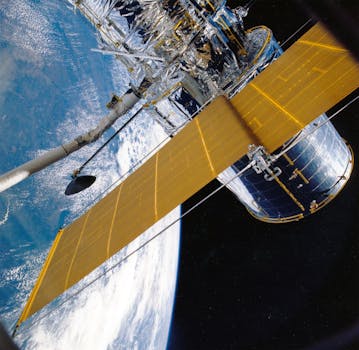Connecting the Globe: The Impact of Orbital Technology on Global Communication

Connecting the Globe: The Impact of Orbital Technology on Global Communication
Orbital technology has revolutionized global communication, enabling faster and more reliable connections across the globe. With the launch of the first commercial satellite in 1962, the world witnessed a significant shift in the way people communicate. Today, orbital technology plays a vital role in facilitating global communication, and its impact is felt in various aspects of modern life.
Orbital technology refers to the use of satellites in orbit around the Earth to transmit data, voice, and video signals. This technology has enabled the creation of a global network of communication, connecting people and businesses across the world. The impact of orbital technology on global communication is multifaceted, and its benefits are numerous. For instance, orbital technology has enabled the provision of internet services to remote and underserved areas, where traditional communication infrastructure is lacking.
The Benefits of Orbital Technology
One of the significant benefits of orbital technology is its ability to provide global coverage. Satellites in orbit can transmit signals to any point on the Earth’s surface, making it possible to connect with people and businesses in even the most remote areas. This has been particularly beneficial for emergency responders, who can use satellite communication to coordinate relief efforts during natural disasters or other crises.
Orbital technology has also enabled the creation of global navigation systems, such as GPS. These systems rely on a network of satellites in orbit to provide location information and timing signals, which are used in a wide range of applications, from aviation to agriculture. The accuracy and reliability of these systems have revolutionized the way we navigate and conduct business.
Future Developments in Orbital Technology
As technology continues to evolve, we can expect to see significant advancements in orbital technology. One area of development is the creation of low-Earth orbit (LEO) satellite constellations. These constellations consist of hundreds or thousands of small satellites in orbit, which work together to provide global coverage and high-speed internet services. Companies such as SpaceX and OneWeb are already working on deploying LEO satellite constellations, which promise to revolutionize the way we access the internet.
Another area of development is the use of orbital technology for 5G networks. As 5G becomes more widespread, there will be a growing need for high-speed, low-latency communication services. Orbital technology can provide a solution to this need, enabling the creation of 5G networks that can provide seamless coverage and high-speed data transfer.
Conclusion
In conclusion, orbital technology has had a profound impact on global communication, enabling faster and more reliable connections across the globe. The benefits of orbital technology are numerous, from providing global coverage to enabling the creation of global navigation systems. As technology continues to evolve, we can expect to see significant advancements in orbital technology, including the development of LEO satellite constellations and the use of orbital technology for 5G networks. As we look to the future, it is clear that orbital technology will play an increasingly important role in shaping the way we communicate and conduct business.




